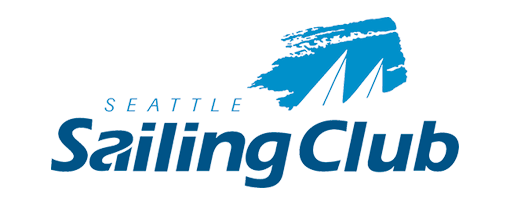Member/Skipper Chartering Responsibilities
Review the below Skipper Responsibilities and ensure your crew are prepared for charter.
PRE-SAIL RESPONSIBILITIES
- Check-in at the office.
- Begin Usage Report.
- Check the boat for damage. (Report any damage before you leave the dock)
- Make sure your crew has proper footwear. Non-slip and non-marking.
- Instruct crew on location of all safety equipment including: fire extinguishers, life jackets, flotation devices, horn, and radio. (Channel 16 is for Emergencies and Coast Guard Help)
- Instruct crew on Man Overboard Procedures.
- Encourage life jackets to be worn (children are required to wear life jackets).
- Appoint a crew member to be second in command in case something happens to the skipper.
- Review the boat’s quick guide or boat manual. Also available here: Member Resources Page
- Check the head, does it work? No paper of any kind in the toilet – all paper goes in a ziploc bag and put into the trash bin.
- Secure all hatches and windows.
- Coil the shore power cord and store it in the lazarette.
- If you have any questions about boat operations, refer to the manual on board, ask a dock concierge, or give the Club a call.
POST-SAIL RESPONSIBILITIES
- Every boat uses at least 6 fenders, 3 to be set up on the port side and 3 to be set up on the starboard side at the widest beam and appropriate height for the dock and rafting.
- Every boat uses at least 4 dock lines – 1 bow, 1 forward spring, 1 aft spring, and 1 stern line. Attach the spring lines to the base of the shroud or mid-ship cleat if available. Physically check that the boat cannot strike the pier or another boat if the wind changes direction or increases. Never use other lines on the boat as dock lines.
- Return to the correct slip.
- Secure halyards, coil all lines.
- Raise the boom away from the dodger.
- Release backstay tension.
- Secure jib sheets with winches.
- Stow all gear in proper locations.
- Flush head to pump dry. Wipe seat.
- Clean the cabin and wipe floorboards with wet paper towels.
- Remove trash bags from bins and dispose of all waste in the dumpsters and recycling bins.
- Stove: Turn off switch on panel and close valves on propane tank.
- Check that the auto-bilge pump switch is set to the AUTO position at all times and double check before you leave the boat.
- Plug in the shore power cord, switch the shore power source on, and ensure that the cord is under the lifelines, and no part of the shore power cord hangs in the water.
- Check that the switch on the electrical pedestal on the dock is ON and that the boat batteries are charging.
- Fall – Winter, each boat will have 1 electric heater and 1 dehumidifier on board. Before departing, unplug both, empty the dehumidifier and store both in a secure location. Before leaving the boat, plug both back in and turn on.
- Secure all hatches and lock the boat.
- Wash the boat with dock hose, brush, and soapy water: hull, topsides, cockpit, and stainless steel (jib furler, pulpits, stanchions, lifelines, turnbuckles, mast base, etc.) to remove corrosive salt.
- Clean anchor and chain, if used.
- Check dock lines to ensure that they are snug and properly tied to dock cleats.
- Finish and submit Usage Report.
Upon returning the vessel, please make sure to clean your boat. Boats left unclean will result is a $80/hr cleaning charge.
SKIPPER REQUIRED EQUIPMENT
- Washington State Boater Education Card. If operating a boat with an engine of 15 hp or greater, it is required by law that boaters have their WSBE. Those born before January 1, 1955 are exempt from this law.
- Personal Life Jacket. You are responsible for having your own PFD and we ask that you provide PFDs for your crew as well. West Marine has 4 packs of PFDs which are stored in a bag and easy to carry along.
- VHF Radio. Not all Club boats have radios on board. Having your own ensures your and your crew’s safety.
- Navigational Charts or App. Members are required to have either a paper chart of the waters they are sailing or an app, such as Navionics.
- Tide Tables or App. Here at the Club we use Captain Jack’s Tide & Current Almanac (available to purchase in the Club’s Pro Shop). Others choose to use Tides Near Me, a free app.
- Phone/Tablet to complete your Usage Report.
Recommended Equipment
- Boat US Towing Membership (Highly Recommended)
- Foul weather gear for you and crew
- Sun protection
- Cruising guides
- Navigational tools, binoculars, GPS, multi-tool, knife, and flashlight.
- Logbook
